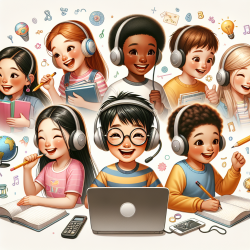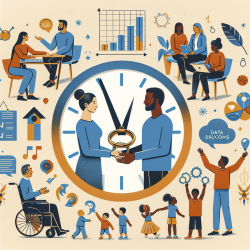Understanding the Individual Education Program (IEP) in South Dakota
The Individual Education Program (IEP) is a cornerstone of special education services, designed to meet the unique needs of students with disabilities. In South Dakota, the IEP process is a collaborative effort involving parents, students, educators, and other professionals. Let's explore the key components and purposes of the IEP to better understand its role in providing a Free Appropriate Public Education (FAPE) to students with disabilities.
The Purpose of the IEP
The IEP serves several critical functions:
- Communication Vehicle: The IEP meeting is a platform where parents and school personnel come together as equal partners to discuss the student's needs, services required, and anticipated outcomes.
- Resolution Platform: It provides an opportunity to resolve any differences between parents and school personnel, either during the meeting or through procedural safeguards if necessary.
- Resource Commitment: The IEP outlines the resources needed to ensure the student receives a FAPE, detailing the special education and related services to be provided.
- Management Tool: It acts as a management tool to ensure that each student receives services tailored to their individual learning needs.
- Compliance Document: The IEP is a compliance and monitoring document to ensure students receive a FAPE.
- Progress Monitoring: It serves as a device for monitoring the student's progress toward IEP goals and in the general curriculum.
The IEP Process – Key Insights
Understanding the IEP process is crucial for ensuring that students with disabilities receive the support they need. Here are some key insights:
Referral and Evaluation
The referral process is a critical first step in identifying students who may need special education services. School personnel should refer students for evaluation when there are specific concerns about a student's behavior or performance that may indicate a disability. This ensures that the concerns are specific and based on observed patterns of behavior.
Drafting the IEP
IEP Team meetings are essential for discussing evaluation findings and recommendations. While it is not encouraged to prepare a draft IEP before the meeting, any preliminary recommendations should be shared with parents to facilitate a full discussion of the child's needs. The final IEP should never be completed before the meeting begins.
IEP Team and Responsibilities
The IEP team is composed of various members, each playing a vital role in the student's education:
- Parents/Guardians: Essential members who provide valuable insights into the student's needs and progress.
- Student: Encouraged to participate, especially when postsecondary goals and transition services are discussed.
- School Representative: A knowledgeable individual about the general education curriculum and resources available.
- General and Special Education Teachers: Provide insights into the student's performance and help develop appropriate goals.
- Related Service Providers: Include speech/language pathologists, occupational therapists, and others who provide specialized support.
Transition Planning
For students aged 16 and older, transition planning is an integral part of the IEP. This involves setting measurable postsecondary goals based on age-appropriate assessments related to employment, education, and independent living skills. Transition services help prepare students for life after high school, ensuring they have the skills and support needed to achieve their goals.
Conclusion
The IEP is a vital tool in supporting students with disabilities, ensuring they receive the education and services they need to succeed. By understanding the IEP process and its components, parents, educators, and professionals can work together to create effective, individualized education plans that meet each student's unique needs.
For more information, please follow this link.










